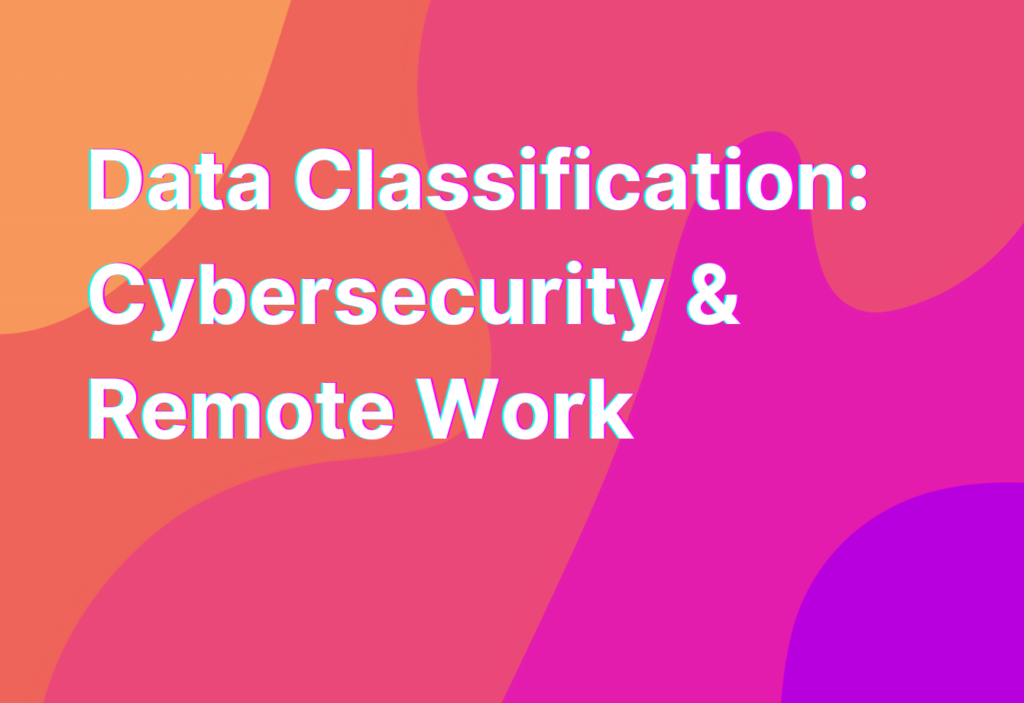Data Classification: Cybersecurity & Remote Work
Hey there, remote work enthusiasts! It’s Ashley here, your friendly remote work advocate with 10 years of experience in the tech industry. Today, I want to talk to you about an important aspect of remote work: data classification and its role in cybersecurity. So grab your favorite cup of coffee and let’s dive in!
What is Data Classification?
Data classification is the process of categorizing data based on its sensitivity and value. It involves labeling data according to predefined levels of sensitivity, such as public, internal, confidential, or highly confidential. By classifying data, organizations can prioritize their security measures and ensure that appropriate controls are in place to protect sensitive information.
Now, you might be wondering why data classification is particularly important for remote work. Well, in a remote work setup, employees often access and handle sensitive data from their own devices and networks. This means that the responsibility of data protection falls not only on the organization but also on the individual remote worker.
The Importance of Data Classification in Remote Work
1. Protecting Sensitive Information: Data classification helps remote workers identify and handle sensitive information appropriately. By clearly labeling data, remote workers can ensure that they are taking the necessary precautions to protect it.
2. Compliance with Regulations: Many industries have specific regulations regarding data protection, such as the General Data Protection Regulation (GDPR) in the European Union. Data classification helps organizations and remote workers comply with these regulations by ensuring that sensitive data is handled in accordance with the required security measures.
3. Risk Management: By classifying data, organizations can assess the level of risk associated with different types of information. This allows them to allocate resources and implement appropriate security measures to mitigate potential risks.
4. Efficient Incident Response: In the unfortunate event of a data breach or security incident, data classification enables organizations to respond quickly and effectively. By knowing the sensitivity of the compromised data, they can prioritize their response and take appropriate actions to minimize the impact.
5. Enhanced Collaboration: Remote work often involves collaboration among team members located in different parts of the world. Data classification facilitates secure collaboration by ensuring that only authorized individuals have access to sensitive information.
Best Practices for Data Classification in Remote Work
Now that we understand the importance of data classification in remote work, let’s explore some best practices to ensure effective implementation:
- Educate Remote Workers: Provide comprehensive training to remote workers on data classification policies and procedures. This will help them understand the importance of data protection and their role in safeguarding sensitive information.
- Use Encryption: Encryption is a crucial component of data protection. It ensures that even if data is intercepted, it remains unreadable to unauthorized individuals. Check out this link for more information on encryption algorithms.
- Implement Access Controls: Limit access to sensitive data to only those who need it for their work. Use strong authentication methods, such as multi-factor authentication, to ensure that only authorized individuals can access classified data.
- Regularly Review and Update Classification: Data classification is not a one-time task. It should be regularly reviewed and updated to reflect changes in the sensitivity or value of data.
- Monitor and Audit: Implement monitoring and auditing mechanisms to track access to classified data. This helps identify any unauthorized access or potential security breaches.
By following these best practices, organizations and remote workers can create a secure environment for handling sensitive data in a remote work setup.
Wrapping Up
Data classification plays a crucial role in ensuring the security of sensitive information in a remote work environment. By categorizing data based on its sensitivity, organizations and remote workers can prioritize their security measures and protect valuable data from unauthorized access or breaches.
Remember, remote work comes with its own set of challenges, but with the right practices and tools in place, we can create a secure and productive remote work environment. Stay tuned for more remote work tips and insights!


